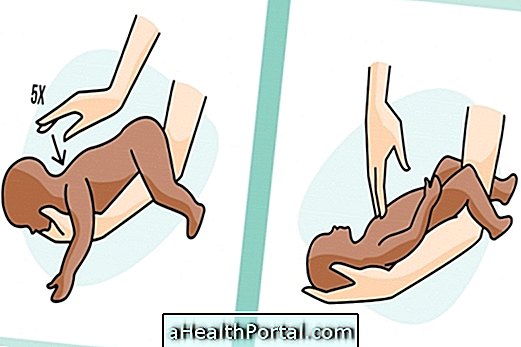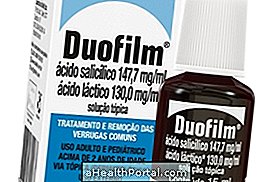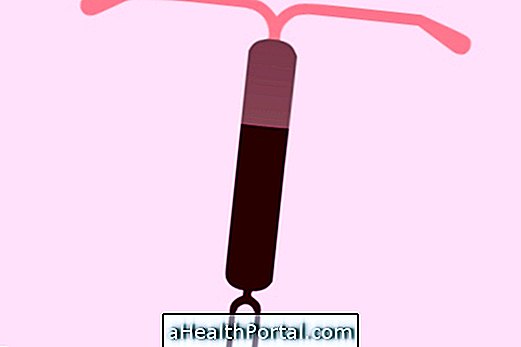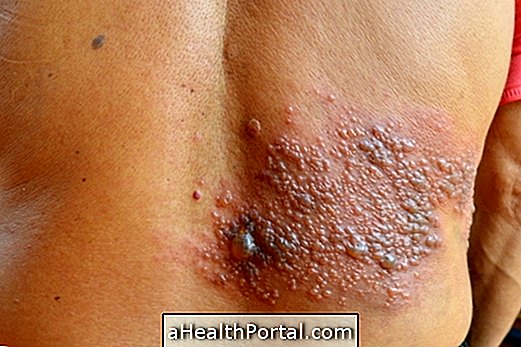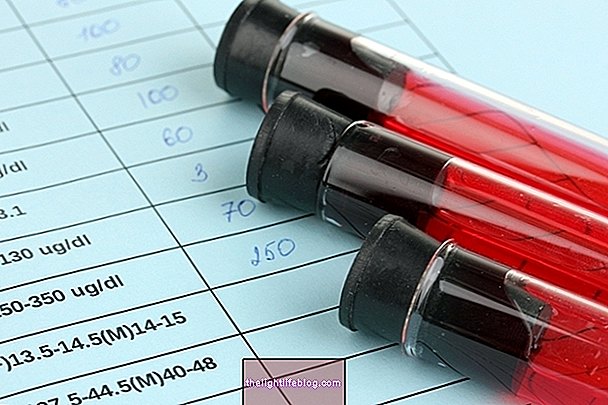When the eardrum is punctured the person feels earache, itching in the ear, his hearing is diminished and he may have bleeding from the ear. Usually a small perforation heals on its own, but in larger ones it may be necessary to use antibiotics, and when that is not enough surgery may be needed.
The eardrum, also called the tympanic membrane, is a thin film separating the inner ear from the outer ear. It is important for the hearing and when it is perforated, the person's hearing capacity decreases.

Symptoms of tympanic perforation
Signs and symptoms that may indicate that the eardrum membrane is perforated are:
- Intense ear pain that comes on suddenly;
- Itching in the ear;
- Blood output through the ear;
- Yellow discharge to the ear due to the presence of viruses or bacteria;
- Decreased hearing;
- Ringing in the ear;
- There may be dizziness or dizziness.
Generally, eardrum perforation heals on its own without the need for treatment and without complications such as total hearing loss, but in any case one should go to the emergency room so that the doctor uses an otoscope can visualize the inner ear region and make sure of the diagnosis.
What to do
It is advised to go to the doctor if you suspect that you have perforated the eardrum, especially if you have discharge or bleeding, and whenever you have decreased hearing or deafness of an ear.
What causes puncture in the eardrum
The most common cause of tympanic perforation is ear infection, also known as otitis media or external; but this can also happen when introducing objects into the ear, which especially affects babies and children; by improper use of the swab, in an accident, explosion, diving in the sea, or during a plane trip, for example.
Treatment for perforated eardrum
Small eardrum perforations usually return to normal within a few weeks, but it may take up to 2 months to regenerate completely. During this time you should use a cotton swab inside your ear whenever you bathe, do not blow your nose, and do not go to the beach or swimming pool so you do not run the risk of getting water into your ear because it can infect you. Earwashing is completely contraindicated until the lesion is properly healed.
Tympanic perforation does not always require specific treatment, but when there are signs of ear infection or when the membrane has completely ruptured, the doctor may indicate, for example, the use of antibiotics such as neomycin or polymyxin with corticosteroids in the form of drops for dripping in the affected ear, but may also indicate the use of antibiotics in the form of tablets or syrups such as amoxicillin, amoxicillin + clavulanate and chloramphenicol.

When surgery is indicated
Surgery to correct the perforated eardrum is usually indicated when the membrane does not fully regenerate after 2 months of rupture. In this case there must be persistent symptoms and the person returns to the doctor for a new evaluation.
Surgery is also indicated if in addition to perforation the person has a fracture or involvement of the bones that form the ear, which is more common when there is an accident or a head injury, for example.
The surgery can be done under general anesthesia and can be done by placing a graft, which is a small piece of skin from another region of the body, and put in place of the eardrum. After surgery the person should rest, use the dressing for 8 days, removing it in the office. It is not recommended to exercise within the first 15 days and it is not recommended to travel for 2 months.
How long does it take to heal?
Drilling of the eardrum can take up to 2 months to heal, and small perforations heal on their own without treatment. In the case of perforation with signs of infection the doctor may recommend the use of antibiotics to drip into the ear or to take, and within 8 to 10 days the infection can be remedied.




